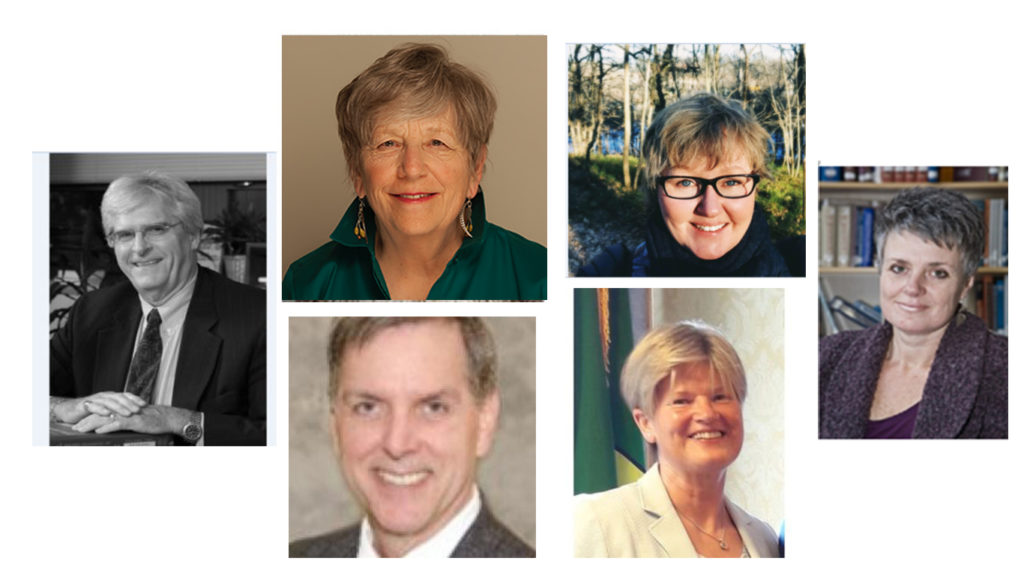Public Policy and Infant Mental Health1
1Based on comments presented during a Symposium on Public Policy and Infant Mental Health the biennial meeting of the World Association for Infant Mental Health. Health (H. E. Fitzgerald & D. Weatherston, Co- Chairs), May 2018, Rome, Italy.
Panel participants, J. Barlow, C. Furmark, C. Maguire, & D. Willis
In 2016, the World Association for Infant Mental Health (WAIMH) adopted its first formal public policy statement, drawing attention to issues specific to the rights of infants (WAIMH, 2016). The writers intended the document to serve as a stand-alone statement on behalf of infants, and a supplement to the United Nations’ Convention on the Rights of the Child, which itself was a special addition to the Universal Declaration of Human Rights. In the words of the WAIMH Board of Directors,
…specifying the unique needs and rights of the child in the first years of life was needed in order to motivate infant oriented actions and policies at both community and societal levels…….many societies around the globe still pay insufficient attention to infants especially in times of stress and trauma. Additionally, consideration of infants’ needs and rights could guide public policies and supports for mothers, fathers, and caregivers, and in giving value to babies in contexts of risk and violence…
The policy brief drew attention to three critical principles in the Rights document:
- Principle 3: The infant’s status as a person is to include equal value for life regardless of gender or any individual characteristics such as those of disability.
- Principle 4: The infant has the right to be given nurturance that includes love, physical and emotional safety, adequate nutrition and sleep, in order to promote normal development.
- Principle 5: The infant has the right to be protected from neglect, physical, sexual, and emotional abuse, including infant trafficking.
The Rights of Infants document was followed by a WAIMH Task Force, chaired by Karlen Lyons-Ruth. The Task Force report detailed the pervasiveness of emotional stress to which infants and very young children are exposed due to a wide number of adverse childhood experiences, including poverty, exposure to violence and war, poor health support, troubled parents, racism and poor supplemental child care (Lyons-Ruth, et al, 2017). Indeed, the WAIMH’s recent publication “Declaration of Infants’ Rights” is an intentional effort to provide coherence for the extraordinary variation among countries with respect to issues promoting healthy social-emotional development during the earliest years of development. Despite 50 years of intense research on infants and very young children, relatively, we know relatively little about their racial, ethnic, and cultural diversity. This is of concern because more than half of the world’s very young children do not live in European or North American, predominately White, countries (Fitzgerald, et al., 1999; Fitzgerald, Fitzgerald, Mann, Cabrera, Sarche & Qin (2010). Remarkable changes in population demographics are occurring in traditionally European or Western countries. For example, considering only birth rates, the United States is already a minority-majority population. Yet, social, educational and health programs reflect historical decisions made by the dominant white majority, rather than decisions based on broad knowledge of diverse cultures or indigenous peoples. Killen, Rutland & Ruch (2011) note that, “interventions to promote equity, tolerance, and justice in childhood are not widespread and are rarely informed by developmental theory and research,” (p. 1).
Equally concerning is the slow growth in the number of researchers of diverse cultures so that Western researchers are not over-represented in the population of developmental scientists studying diversity within early development. As Cabrera notes, “intervention science based only on findings of adversity and maladjustment can perpetuate a deficit perspective and promote a harmful stereotype that associates deficits of a select group with an entire group of people who share the same ethnic or cultural origin.” (p. 14). On a positive note, a shift away from deficit-oriented research has enabled more researchers to focus on identifying strengths and resilience factors that build positive life course pathways (Cabrera, 2013; Killen, Rutland & Ruck, 2011).
These issues and growing unrest with respect to the increasing callous treatment given to infants and their caregivers worldwide, prompted a number of infant mental health specialists to propose a symposium for presentation at the 2018 biennial meeting of the World Association for Infant Mental Health (WAIMH). The symposium opened with brief introductory comments on Dye’s (1972) definition of social public policy as “anything a government chooses to do or not to do” (Dye, 1972, p.1). Because Dye’s definition and approach to policy reflects a linear view of process, others developed approaches based on more systems-based concepts of public policy (Yoshikawa & Hsueh (2001). Anderson’s (2003) assertion that policy represented a “purposive course of action or inaction undertaken by an actor or a set of actors in dealing with a problem or matter of concern (p.2),” and John’s (1998) observation that, “Public policy making can be characterized as a dynamic, complex, and interactive system through which public problems are identified, legislated and countered by creating new public policy or by reforming existing public policy (p.2)” were noted. McKinney, Fitzgerald, Marie-Winn and Babcock (2017, p. 168) note that public policy stresses, “standards instituted by governmental and /or regulatory agencies that establish expectations for behavior or levels of professional performance in public health, education, and overall public welfare with emphasis on social justice.”
The symposium provided four case examples that cover much of the range of both linear and systems concepts of policy. Catarina Furmark (Sweden and Nordic countries) reviewed efforts to strengthen policies and practices across the Nordic countries (Finland, Norway, Denmark, Iceland, and Sweden). Catherine Maguire (Ireland) drew attention to intra-governmental agency early childhood policies and practices in Ireland that lack co-ordination and thus are limited in their collective impact nationally. Jane Barlow (United Kingdom) focused attention to infant mental health programming in the United Kingdom, reviewing how it is attempting to “catch up” after failing to act on early childhood initiatives in the past. David Willis (United States) reviewed the history of policies in the United States affecting early childhood education, and its new policies related to home visiting programs and new efforts designed to implement policies reflecting an infant mental health perspective.
We opened the symposium with simple, but profoundly important statements taken from the WAIMH position paper on infants’ rights: “Specifying the unique needs and rights of the child in the first years of life is needed in order to motivate infant oriented actions and policies at both community and societal levels.” Stated somewhat differently: We need to value babies and very young children; keep them fed, safe, nurtured, loved, protected from abusive or neglectful care; and, we need to value and support mothers, fathers and all others who provide babies with care. In discussing science to policy and practice”, distinguished, multi-disciplinary, multi-university authors offer three core principles to guide policy makers and program developers to improve outcomes for children and families (Center on the Developing Child at Harvard University, 2017).
- Support responsive relationships
- Reduce sources of persistent or toxic stress
- Strengthen core life skills
At the center, always, are strong, supportive relationships: “Starting at birth and continuing throughout life, our ability to thrive is affected by our ongoing relationships and experiences and the degree to which they are healthy, supportive, and responsive or not.” (Center on the Developing Child at Harvard University, 2017, p. 2).
Panel participants suggested elements that are essential to assure healthy growth and development in infancy and early childhood. Each element includes a focus on relationship:
- Healthy relationships with stable, nurturing caregivers
- Strong and supported parents who are seen as “mediators of change” as they enter into sensitive, responsive, and nurturing relationships with their infants and young children
- Coordinated and dedicated funding to support a service continuum– promotion, prevention, intervention, and treatment –prenatal to 3, for all families – with relationship work at the center
- Reduction of child poverty through focus on two-generational or relational strategies that reduce the social and emotional risks of infancy and stresses of early parenthood and address the wellbeing of infants, very young children, caregiving families, and communities
- A well-prepared, high quality, multidisciplinary work force that is relationship driven
Over 50 years ago, outstanding leaders in the infant mental health community laid the foundation for contemporary practice and thinking. Three come to mind. All focus on babies and relationships:
- Donald Winnicott stressed, “There is no such thing as a baby, only the baby and those caring for the baby,” urging attention to early developing relationships. (Winnicott, 1964)
- Selma Fraiberg asked, “What about the baby?” urging policy makers and practitioners to think about the baby, bring the baby into focus, understanding the needs and rights of babies to loving relationships, and strategies to reduce the high risk of relationship failures. (Fraiberg, 1980)
- John Bowlby, contributed attachment theory as a cornerstone for understanding the early organization of mother-infant relationships. (Bowlby, 1969)
(Note: Infant mental health researchers and practitioners need to be reminded that a positive early relationship is not an inoculation for positive subsequent life-course outcomes, but a powerful contributing force.)
In his edited collection of Rene Spitz’s papers, Robert Emde (1983, p. 201) quotes Spitz as saying, “Every successive organizer in the further course of development introduces a new formula of relations, successively more complex and better adapted.” Positive life course outcomes require positive adaptive changes at minimum in both children and their caregivers in order to build upon and sustain “Good Starts.”
As panel members stressed, bringing the infant to the attention of policy makers and understanding parents, as “mediators of change” through two-generational support services, has been a slow, challenging process.
In a National Science Foundation report on University-Led Cooperative Engagement Approaches to problem-solving involving environmental and agricultural domains, the emphasis in these initiatives is on trust building and social learning in collaboration with key stakeholder groups such as farmers, coastal landowners, minority groups, and industry members.
What are the equivalent initiatives for studies of early human development? Solution focused programs generated by homogenous populations, do not always work for heterogeneous, richly diverse populations. In short, the “White” model is not necessarily the Right model! We need to have greater respect for indigenous and local knowledge. Are we framing the right questions when people not of poverty or color, study people in poverty or of color? Where are local or indigenous voices in the formulation of research questions, voices that may lead to substantially different questions or approaches to research, because of the inclusion of tacit knowledge from the world of lived experience, rather than from the world of university, disciplinary-anchored world-views of relationship dynamics or culturally evolved family structures?
As so clearly articulated by our panelists, the significant challenges that interrupt pathways to good mental health in infancy and early childhood are real:
- Chronic underinvestment in infancy & early childhood
- Fragmented efforts to implement or sustain services for children 0-3, especially services supporting social and emotional health and infant mental health
- Persistent child and family poverty, increasing the burdens of vulnerability in infancy and early childhood and stress in early parenthood
- And, the resurgence of racism and discrimination linked to increased migration of human populations throughout the world.
Astonishing prevalence data on the extent of mental health problems among children 1-5 years of age make us pause as we realize that we are falling short of protecting the needs and rights of children and supporting families to assure a healthy course of development. Such data fail to include the millions of young children living through war and extraordinary injustices. The time to act is now; babies and their families cannot wait.
As our panelists reported, there are some hopeful signs. Each has referenced effective, practice-based structures and evidence based work that exemplifies infant and early childhood mental health informed practice, service, training, and/or research:
- Ireland’s public resources and proactive supports, beginning in pregnancy, extending into early childhood, and focused on systems level support services,
- The United Kingdom’s Early Excellence Centres, Parenting Early Intervention Programs, Sure Start, 1001 Critical Days, and home visiting,
- The Scandinavian Child health system’s relational health screening, monitoring, and promoting infant mental health
- The United States’ endorsement approach to workforce development through the professional recognition of knowledge, skills and reflective practice experiences
Dr. Weatherston inclined to say, “For crying out loud, we know what infants, very young children, caregiving families, and communities need. We have identified successful strategies and programs that address infancy and early childhood, with a focus on infant mental health, but many, many infants and families are underserved. What is getting in the way of developing strategies and implementing programs in resource rich countries to meet the needs across a service continuum – promotion, prevention, intervention, treatment – to better assure that all babies and families are free from risk?”
Is it in the language we use? Can we together discover how to convey best what we know to be true about early human development, the power of relationships to effect change, the impact of nurturing care on early development, the effect of early intervention on the reduction of risks? Can we learn to communicate clearly and effectively so that policy makers and program developers in multiple domains will hear us and take action on behalf of all infants, families, caregivers, and communities?
In 1980, Selma Fraiberg’s commented:
Today, we are in possession of a vast scientific treasure acquired through the study of normal and (deviant) infants, a treasure that should be returned to babies and families as a gift from science. (Fraiberg, 1980, p.3)
We are beginning to do this – to translate our scientific understanding – our knowledge about babies, their needs and rights, and the power of caregiving relationships in which they develop and grow – to those who can effect meaningful change, the policy makers, program developers, and legal community. However, our science needs to be better informed by views that do not implicitly or explicitly support a hierarchy of human values, where Western, Educated, Industrialized, Rich and Democratic (WEIRD) cultures posit that people are “autonomous individuals with wants, needs, and preferences that should be fulfilled.” Where are relationships and communities in such WEIRD cultural value orientations?
We challenge everyone – scientists, educators, practitioners, the judges and legal community, policy makers – to talk with each other, to engage in relationships, to support one another, to share particular challenges and successful solutions, to collaborate with one another across countries to bring real change through infant mental health informed policies and practices for all babies, all families and all communities.
We challenge WAIMH to establish an Infant Mental Health Science to Policy and Practice Task Force. To meet regularly using the technology we have available to span the globe, and to begin the process as we “specify the unique needs and rights of the child in the first years of life in order to motivate infant oriented actions and policies at both community and societal levels.” If the World Association for Infant Mental Health does not boldly address trans-cultural policy issues supporting infant mental health, WHO WILL?
Contact the WAIMH Office if you are interested in joining an Infant Mental Health Science to Policy and Practice Task Force: office@waimh.org
References
Anderson, J. E. (2001). Public policymaking: An introduction. Boston: Houghton Mifflin Company.
Bowlby, J. (1969). Attachment and loss: Vol 1. Attachment. New York: Basic Books.
Cabrera. N.J. and the SRCD Ethnic and Racial Issues Committee. (2013). Positive development of minority children. SRCD Social Policy Report, 27 (2).
Center on the Developing Child at Harvard University (2017). Three Principles to Improve Out- comes for Children and Families. http://www.developingchild.harvard.edu.
Dye, T. (1987). Understanding public policy. New York: Prentice Hall.
Emde, R. N. (Ed.) (1983). Rene A. Spitz: Dialogues from infancy. Selected papers (With commentary). New York: International Universities Press.
Fitzgerald, H. E., Johnson, R. B., Van Egeren, L. A., Castellino, D. R., Johnson, C. B., & Judge-Lawton, M. H. (Eds) (1999). Infancy and culture: An international review and source book. New York: Falmer Press.
Fitzgerald, H. E., Mann, T., Cabrera, N., Sarche, M., & Qin, D. (2010). Tidlig barndom og identitet I multikulturelle miljoer(Infancy and identity in multicultural context). In V. Moe, K. Slinning, & M. B. Hansen (Eds). Handbook of infant and toddler psychology (pp 269-282). Oslo, Norway: Gyldendal Akademisk.
Fraiberg, S. (1980). Clinical case studies in infant mental health: The first year of life. New York: Basic Books.
John, P. (1998). Analyzing public policy. London: Continuum Press.
Killen, M., Rutland, A., & Ruck, M. D. (2011). Promoting quity, tolerance, and justice in childhood. SRCD Social Policy Report, 25 (4).
Lyons-Ruth, K., Todd, J., von Klitzing, K., Tamminen, T., Emde, R., Fitzgerald, H. E., Paul, C., Karen, M., Berg, A., Foley, M., & Watanabe, H. (2017). The worldwide burden of infant mental health and emotional disorder. Report of the Task Force of the World Association for Infant Mental Health. Infant Mental Health Journal, 39, 1-9.
McKinney, M., Fitzgerald, H. E., Marie-Winn and Babcock, P. (2017) Public policy, child development research and boys at risk: challenging, enduring and necessary partnership. Infant Mental Health Journal, 38, 166-176.
Raikes, A., Britto, P. R., Yoshikawa, H., & Iruka, I. (2017). Children, youth and developmental science in the 2015-2030 global sustainable developmental goals. SRCD Social Policy Report, 30 (3).
WAIMH (2016). WAIMH position paper on the rights of infants. Perspectives in Infant Mental Health, World Association for Infant Mental Health. https://perspectives.waimh.org/wp-content/uploads/sites/9/2017/05/PositionPaperRightsInfants_-May_13_2016_1-2_Perspectives_IMH_corr.pdf
Winnicott, D. W. (1964). The child, the family, and the outside world. Harmondsworth: Penguin Books.
Yoshikawa, H., & Hsueh, J (2001). Child development and social policy: Toward a dynamic systems perspective. Child Development, 72, 1887-1903.
Authors
Deborah J. Weatherston, Ph.D.
Alliance for the Advancement for Infant Mental Health
and
Hiram E. Fitzgerald, Ph.D.
Department of Psychology
Michigan State University








